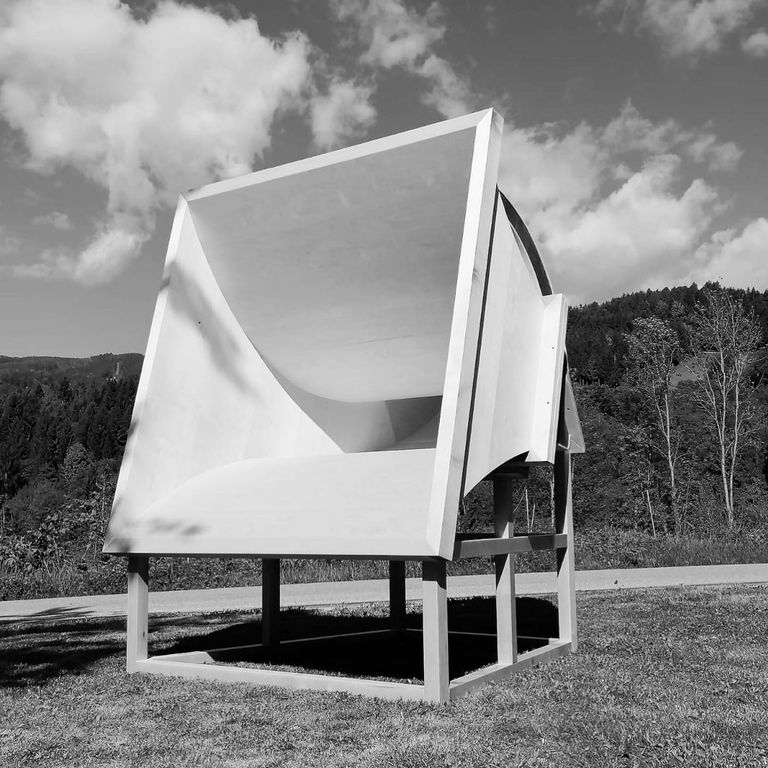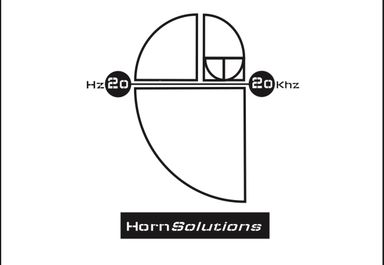Why we use Hornloudspeakers

Part 1. The history of horn loudspeakers
Part 2. Our part in the development
Part 1.
After a period during the infancy of the gramophone, when it was universally employed, the horn loudspeaker gained increasing prominence, and its development advanced steadily. From 1887, when Emil Berliner invented the gramophone, to the golden era of the late 1920s, when Western Electric in the USA and Klangfilm in Europe began designing some of the most iconic horn loudspeakers in history, the pursuit of perfect sound was relentless.
However, after the heyday of cinema, the popularity of horn loudspeakers declined—likely due to their large size, the complexity of their manufacture, and consequently their high cost. The trend toward smaller living spaces certainly played a role as well. Today, while full-range horn systems are embraced only by a small circle of enthusiasts, most experts unanimously recognize their unparalleled virtues as loudspeaker enclosures, especially their exceptional realism and “presence.”
But let us take a look back at their origins.
The 1920s marked a period of unprecedented prosperity in the United States and Europe. Enormous resources were devoted to advancing sound reproduction technology across various domains: telephones, microphones, record-making processes, radio, and, most notably, talking motion pictures. Films were as central to daily life then as television and the internet are today. In major cities, newsreel theaters operated around the clock, much like 24/7 television channels. The invention of “talkies,” or movies with synchronized sound, was a groundbreaking event that permanently transformed film and media.
Two colossal corporations, RCA and Western Electric, dominated American and global communication technology for much of the 20th century. They were responsible for numerous innovations that underpin modern life, from the telephone system to record technology (pioneered by RCA under its Victrola brand), television, and even the VCR. Both companies played crucial roles in the foundational development of sound for motion pictures.
Theaters of that era were nothing like the multiplexes of today. They were grand, cavernous spaces, often seating thousands of patrons. With upholstered seats, heavy drapery, and audiences that absorbed significant sound, achieving effective sound reproduction posed a formidable challenge. The demand for loudness was immense, but the amplifiers of the time, relying on simple vacuum tube triodes, produced very limited power—typically no more than 10 watts per amplifier. Even with multiple amplifiers (which were large and expensive), the total power available to deliver credible sound in a vast theater was minuscule compared to even the most basic modern amplifiers. So how did they transform such modest power into impressive sound?
The answer was horns.
Horns themselves were not a new invention, but engineers at Bell Labs, Western Electric (notably Wente, Thuras, and Fletcher), and RCA (Volkman, Masa, and Olson) elevated horn technology to extraordinary heights. Their designs—such as Western Electric 15A or the 13A, and later the 22A—were monumental structures, typically positioned behind theater screens. These horn-loaded loudspeakers were so efficient that they could convert the limited power of triode amplifiers into plausible, realistic sound levels, even in the largest theaters.
In Europe, a few years later, Klangfilm achieved similar feats with systems like the Bionor and Eurodyn. Without the aid of computers, these engineers solved complex acoustical and psycho-acoustical challenges that remain difficult even with today’s advanced technology. Their achievements were nothing short of miraculous.
With the onset of the Great Depression and advances in amplifier technology, the necessity and popularity of large horn loudspeakers gradually diminished. By the mid-20th century, horns were nearly extinct, with few exceptions such as Klipsch. The development of the transistor by Bell Labs under Shockley, Bardeen, and Brattain in 1948 introduced new possibilities, though the sound quality of early transistor amplifiers was far from ideal. Even Klipsch eventually succumbed to market pressures, producing smaller, more economically viable designs. The once-proud kings of cinema were folded, both literally and figuratively, into compact horn systems suitable for living rooms.
However, these folded designs introduced unavoidable compromises, particularly above frequencies of 200 Hz. The misconception that greater excursion (x-max) and power can compensate for reduced cabinet volume remains one of the biggest obstacles to achieving perfect sound. Yet, shouldn’t perfect sound—the “holy grail” of audio—be our ultimate goal?
A technical consideration.
Imagine a midrange dome tweeter attempting to reproduce a signal at, say, 250 Hz at 90 dB. Depending on the amplifier and its input sensitivity, this could require 10 to 50 watts of power, with the diaphragm needing to move 3 to 8 millimeters. This movement takes time—a precious commodity in realistic music reproduction.
In contrast, our 666 compression driver requires less than 0.1 watts of power and diaphragm movement of less than 0.2 millimeters to achieve the same result. This lower power demand not only minimizes distortion but, more importantly, allows the signal to be generated much faster.
It is this speed and efficiency that give horn speakers their unparalleled dynamics, immediately captivating listeners. For this reason, we would never use a standard dome midrange driver or tweeter in a horn system. A horn speaker can only showcase its full potential when paired with a compression driver.
Part 2.
1. Reimagining the Classics
We honor the legacy of iconic Western Electric horns by using their designs as a foundation, but we’ve taken them to the next level. By incorporating modern CAD precision, advanced damping techniques, and premium materials, we’ve created horns that not only preserve the magic of the originals but surpass their capabilities in every way. For a deeper look into our meticulous process, visit our How We Work page.
2. Cutting-Edge DSP Technology
One of the challenges of horn systems is the significant group delay caused by the differing horn lengths. To tackle this, we use state-of-the-art DSP technology to achieve perfect time alignment. With the addition of FIR filters, our systems don’t just adjust for room acoustics—they also deliver phase linearity, creating an unparalleled sense of spatial depth and dimensionality that’s virtually unheard of in horn loudspeakers.
3. Global Remote Control & Maintenance
Every Hornsolutions system is fully remote controllable, allowing us to perform maintenance, fine-tuning, and updates for our clients anywhere in the world. This ensures your system stays in peak condition no matter where you are.
4. Uncompromising Concentric Design
We are proud to be the only horn loudspeaker manufacturer in the world to implement a truly concentric arrangement of the horns. This design ensures that every sound reaches the listener perfectly aligned on a single axis, providing an unmatched coherence and purity of sound. Music becomes a seamless, immersive experience.
5. Tailored Bass Solutions
With decades of expertise in building both large and small horn systems, we’ve come to understand that the listening room itself plays a crucial role in sound quality. Every room has its own acoustics—and its own challenges. Unlike other manufacturers, we address these head-on. Around 80% of room-induced sound problems occur below 200 Hz, with modes causing frequency cancellations or boosts that distort the entire soundstage. To solve this, we custom-design bass solutions specifically for each client’s room. Whether it’s through fully bespoke designs or our standard bass horn solutions, we ensure that your system delivers flawless sound, perfectly adapted to your environment.
